Introduction
In the rapidly evolving digital landscape, understanding the intricacies of application development has never been more critical. Businesses seeking to thrive must navigate a multifaceted environment that encompasses market research, user experience design, and the integration of cutting-edge technologies. This article delves into essential strategies for developing applications that not only meet market demands but also enhance user engagement and satisfaction.
From leveraging AI for personalized e-commerce experiences to implementing robust testing frameworks that ensure quality, each aspect plays a pivotal role in achieving success. By adopting proven methodologies and staying attuned to industry trends, organizations can position themselves at the forefront of innovation, ultimately driving growth and fostering loyalty in an increasingly competitive marketplace.
Market Research and Analysis
Conducting comprehensive market research is crucial for understanding consumer behavior, industry trends, and competitive landscapes. Utilizing various methodologies such as surveys, focus groups, and advanced analytics tools allows businesses to gather valuable insights about their target audience. For instance, a hypothetical app development project, akin to the TimeTrek case study, illustrates how categorizing customer feedback can unveil critical insights. This app design process included examining traveler feelings associated with journeys, highlighting the necessity for comprehensive data gathering to guide app attributes and operations.
Adopting a structured approach to research design is essential. Selecting appropriate research methods—be it agile research or human-centered design—enables teams to implement the best study design, control data quality, and create actionable questionnaires. As highlighted by industry experts, the insights derived from effective research can significantly impact decision-making and product development.
Recent funding news, such as AppMagic's $3 million investment aimed at enhancing market intelligence tools, underscores the ongoing evolution and importance of data-driven strategies in app development. The insights gained from such investments not only support research and development but also pave the way for creating user-friendly applications that resonate with market demands.
Therefore, leveraging robust data analysis techniques is not just beneficial but essential for developing applications that meet the needs of the market and ensure a competitive edge.
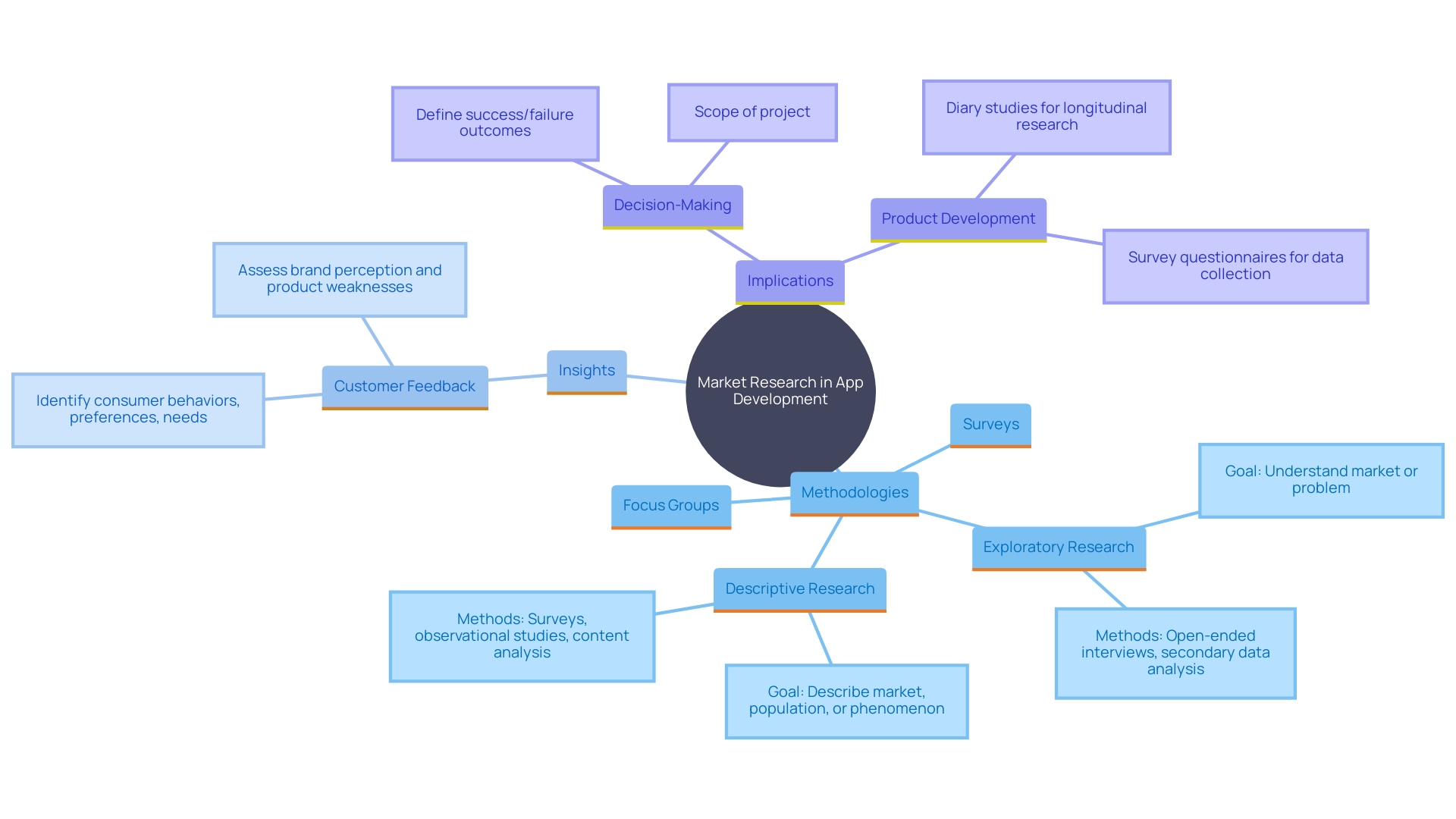
Key Features for Ecommerce Apps
Key features that enhance the e-commerce experience include intuitive navigation, secure payment gateways, and customized interactions. Incorporating wish lists, client reviews, and loyalty programs not only encourages user engagement but also creates a community around your brand. The importance of strong search features and tailored product suggestions cannot be underestimated; these components play an essential role in assisting individuals through their shopping experience, making it smooth and enjoyable.
In 2024, e-commerce trends emphasize the growing significance of Artificial Intelligence, especially machine learning algorithms, which allow businesses to create shopping interactions that connect on a personal level with each individual. This level of personalization is becoming a cornerstone of effective digital retail strategies.
Furthermore, the emergence of cutting-edge retail technologies, like checkout-free shopping systems demonstrated by the recent introduction of Dublin Town To Go, illustrates how businesses are utilizing technology to improve convenience for shoppers. This store permits patrons to enter by scanning their payment cards, and automatically charges them as they leave, eliminating long queues and improving the overall shopping process.
Statistics reveal that e-commerce is a rapidly expanding segment of the global economy, encompassing a wide array of industries from retail to travel. This growth underscores the need for businesses to adapt and innovate continually. As the landscape evolves, integrating advanced features and technology becomes essential for maintaining competitiveness and meeting consumer expectations.
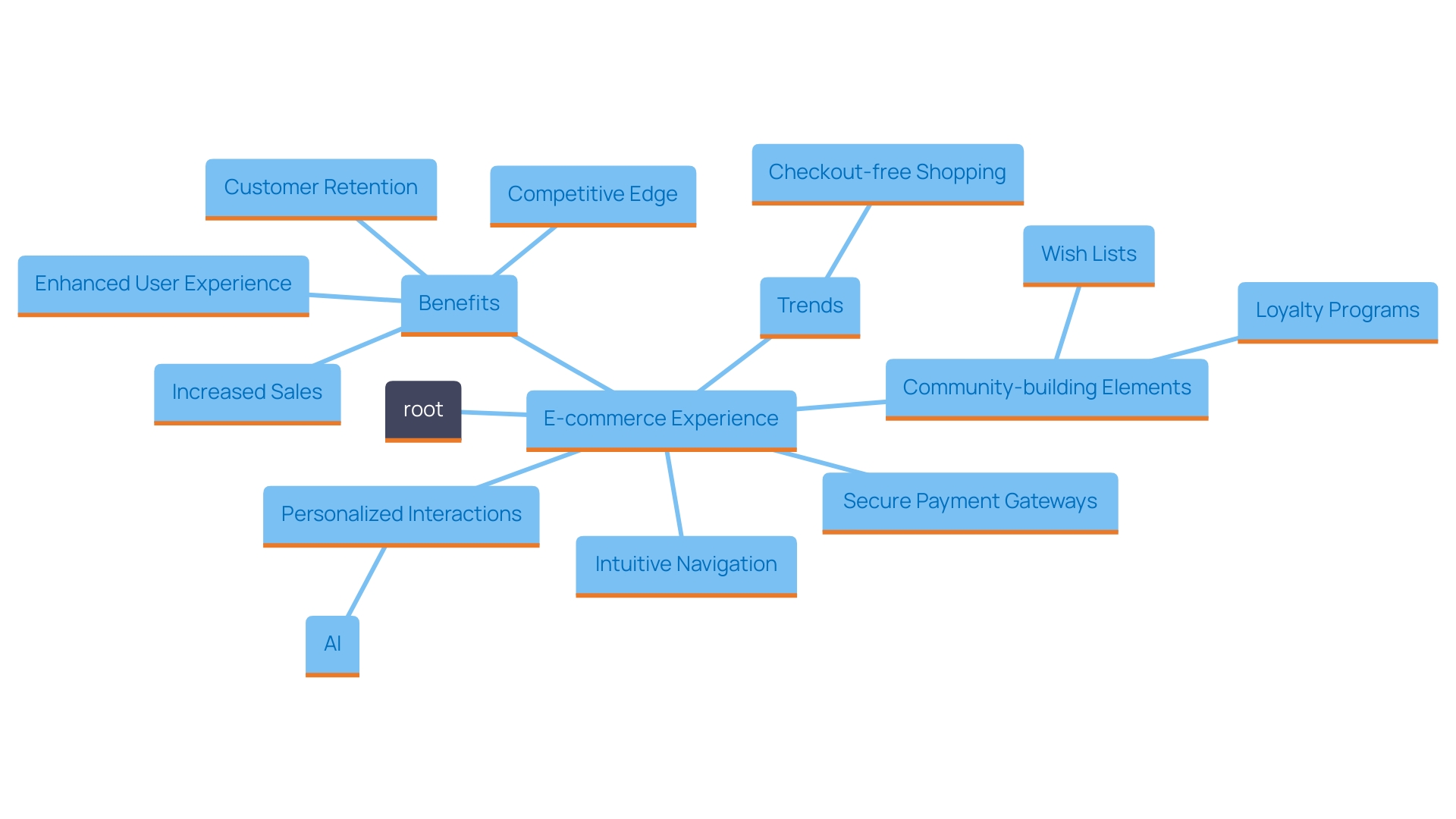
User Experience Design
The interaction design (UX) is crucial for keeping individuals engaged in mobile applications. An intuitive navigation system, visually compelling layouts, and rapid loading times are essential elements that contribute significantly to customer satisfaction. Statistics show that more than 50% of individuals are unlikely to interact with a brand that has a poorly designed mobile site, highlighting the importance of a friendly interface. Users often prefer a mobile site that is functional, even if it’s not visually striking, over one that is aesthetically pleasing but slow to load. In fact, mobile sites that load in two seconds or less experience a 15% higher conversion rate than their slower counterparts.
Integrating feedback loops is essential for the continuous improvement of the application design. By actively seeking and implementing customer insights, organizations can tailor their products to better meet client needs, thereby enhancing retention. Research indicates that 79% of individuals are more likely to return and share a mobile site when it is easy to navigate. Moreover, 90% of B2B buyers who appreciate an excellent mobile interface are likely to make repeat purchases from the same vendor.
A seamless onboarding process stands out as another critical factor in enhancing satisfaction among individuals. This stage not only familiarizes individuals with the app’s functionalities but also establishes the mood for their overall experience. 'Given that 61% of individuals will search elsewhere if they can't find what they need promptly, ensuring that new individuals can easily navigate and understand the app is crucial.'. Addressing these elements not only fosters a positive initial interaction but also encourages users to return, solidifying the app's position in a competitive marketplace.
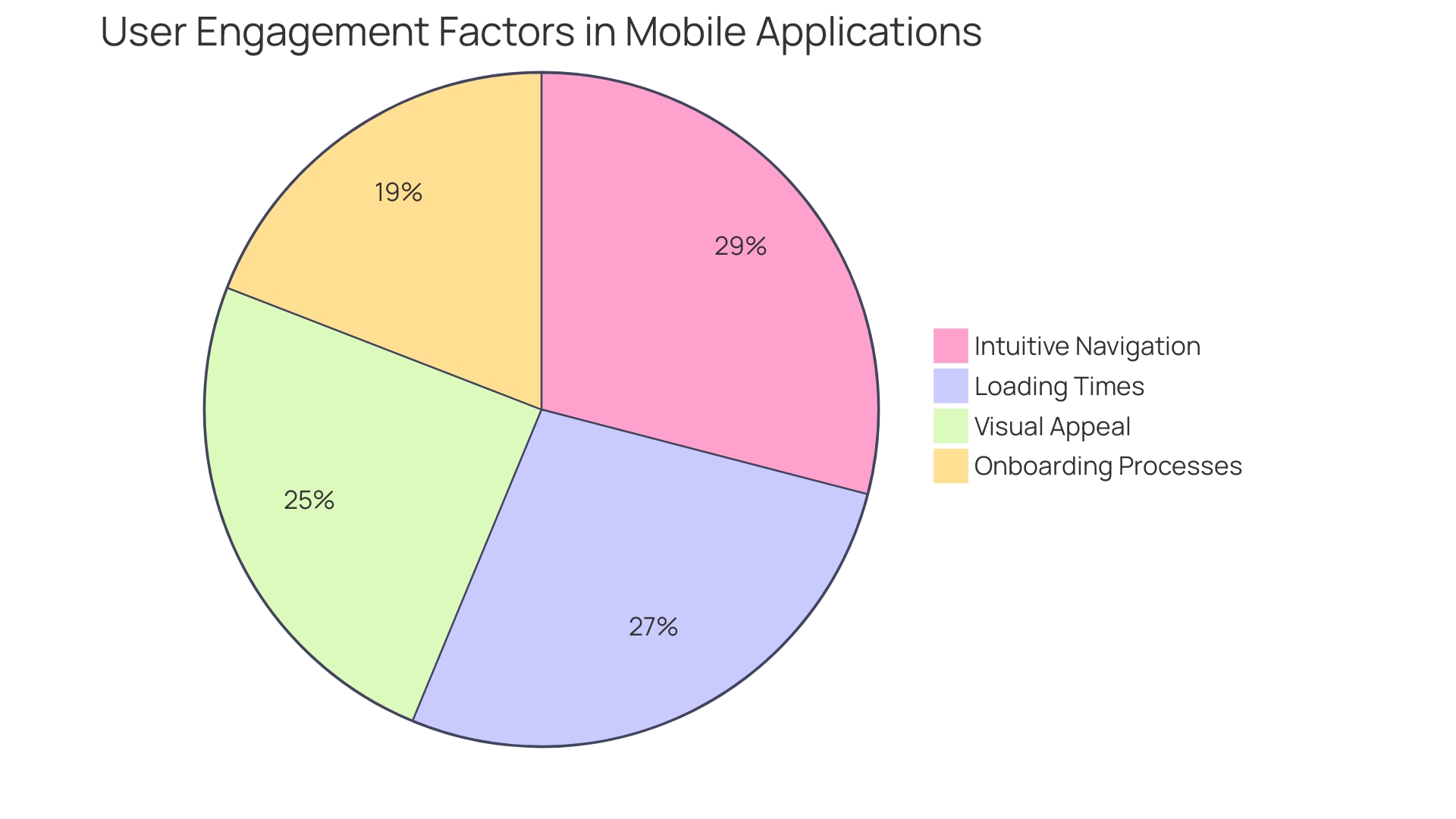
Testing and Quality Assurance
Establishing a thorough evaluation framework is essential for identifying bugs and usability issues before launching an application. This framework should incorporate both automated evaluation tools and manual examination methods to ensure comprehensive coverage across various scenarios. With the swift advancement of technology and consumer expectations, it’s essential that evaluation protocols are frequently revised to adapt to new operating systems and device variations.
In today’s competitive environment, where 88% of visitors are less inclined to revisit a website after encountering unsatisfactory performance, the stakes for software evaluation are exceedingly high. As detailed in the World Quality Report, organizations have increasingly acknowledged that efficient evaluation strategies not only enhance client satisfaction but also lead to substantial cost reductions and better return on investment (ROI).
Additionally, the incorporation of specialized evaluation zones—such as security, internationalization, accessibility, and performance—into the assessment framework can further enhance the experience for individuals. By embracing a methodical strategy for software evaluation, companies can not only meet but surpass customer expectations, ultimately nurturing loyalty and decreasing the chances of app removals.
With innovation occurring at a lightning pace, QA teams must remain agile, ensuring that functionality, quality, and speed of release are prioritized. Leveraging modern testing methodologies can transform the perception of testing from a financial liability to a critical investment in the product’s success.
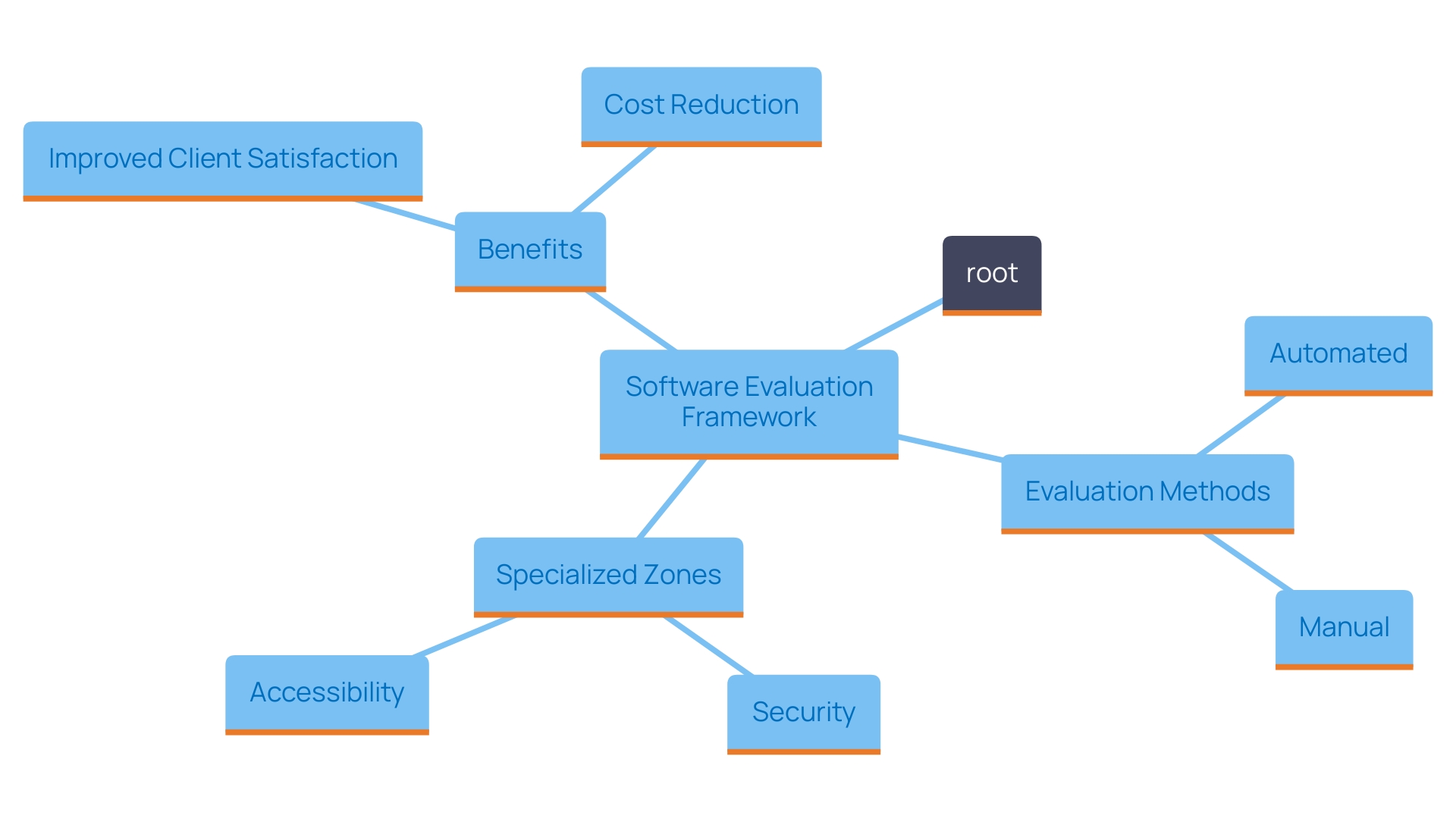
Scalability and Performance Optimization
Planning for scalability is crucial from the very beginning of your application development process. By establishing a robust architecture and optimizing your database schema early on, you can ensure that your app can efficiently handle increased traffic without sacrificing performance.
Scalability encompasses both vertical and horizontal approaches. Vertical scaling, or scaling up, involves enhancing the existing server's capabilities by adding more resources like CPU, RAM, or storage. While this approach can be straightforward, it has its limits, as eventually, hardware upgrades will reach a ceiling. Horizontal scaling, on the other hand, entails adding more servers to distribute the workload, allowing your application to grow dynamically as demand increases.
Regular performance audits are essential in this context. They help pinpoint bottlenecks and areas that require optimization, enabling timely adjustments that keep your application running smoothly. As noted, "scalability is the ability of a system to handle increased workload by proportionally increasing its performance." This adaptability is essential for sustaining reliability and manageability as your audience grows.
A prime example of effective scalability in action is Pinterest. Beginning with a small group and a basic MySQL database, they succeeded in expanding to 11 million monthly active participants by concentrating on established technologies and intelligently scaling their infrastructure. This journey underscores the importance of a well-thought-out strategy in managing growth sustainably.
In today's fast-paced digital landscape, database performance and scalability must work hand-in-hand. Optimizing query structures, maintaining efficient data models, and employing indexing strategies are all vital components of ensuring that your database can handle increasing loads effectively. As demand fluctuates, the ability to provision and deprovision resources promptly—known as elasticity—further enhances your system's performance, keeping applications operational and responsive.
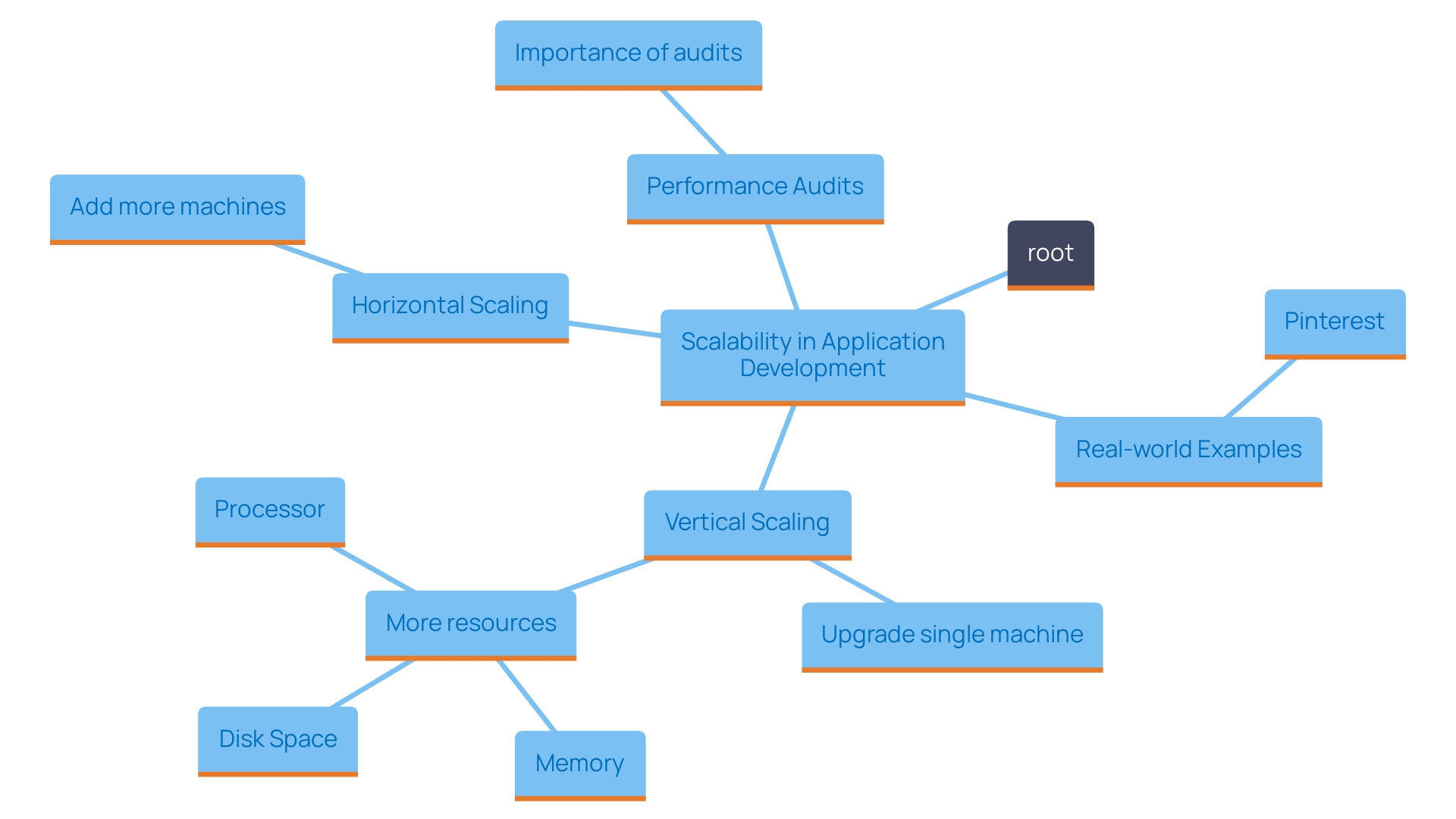
Leveraging AI and Personalization in Ecommerce
Integrating AI-powered algorithms into online shopping platforms allows companies to examine consumer data efficiently, providing tailored suggestions that connect with each individual. As emphasized by industry trends, 86% of e-commerce decision-makers are seeking to boost their AI investments, acknowledging its influence on improving client experiences and driving conversions.
Employing chatbots for client assistance further improves engagement, streamlining communication and offering immediate support. This technology not only reduces response times but also leverages data to tailor interactions based on user behavior and preferences. A focus on tailored content and offers can result in notable improvements in conversion rates, with studies showing that businesses emphasizing client interactions have observed a 23% increase in new client acquisition and an 18% rise in lead generation.
Data amassed from various consumer touch-points—ranging from advertisement clicks to product reviews—provides e-commerce retailers with a goldmine of insights. By understanding consumer personas and their purchasing habits, businesses can strategically target both new and existing customers, ultimately reducing churn and basket abandonment. As noted by Olga Dogadkina, co-founder and CEO of Emperia, personalization isn't merely a trend; it’s a game changer that significantly benefits both brands and consumers alike.
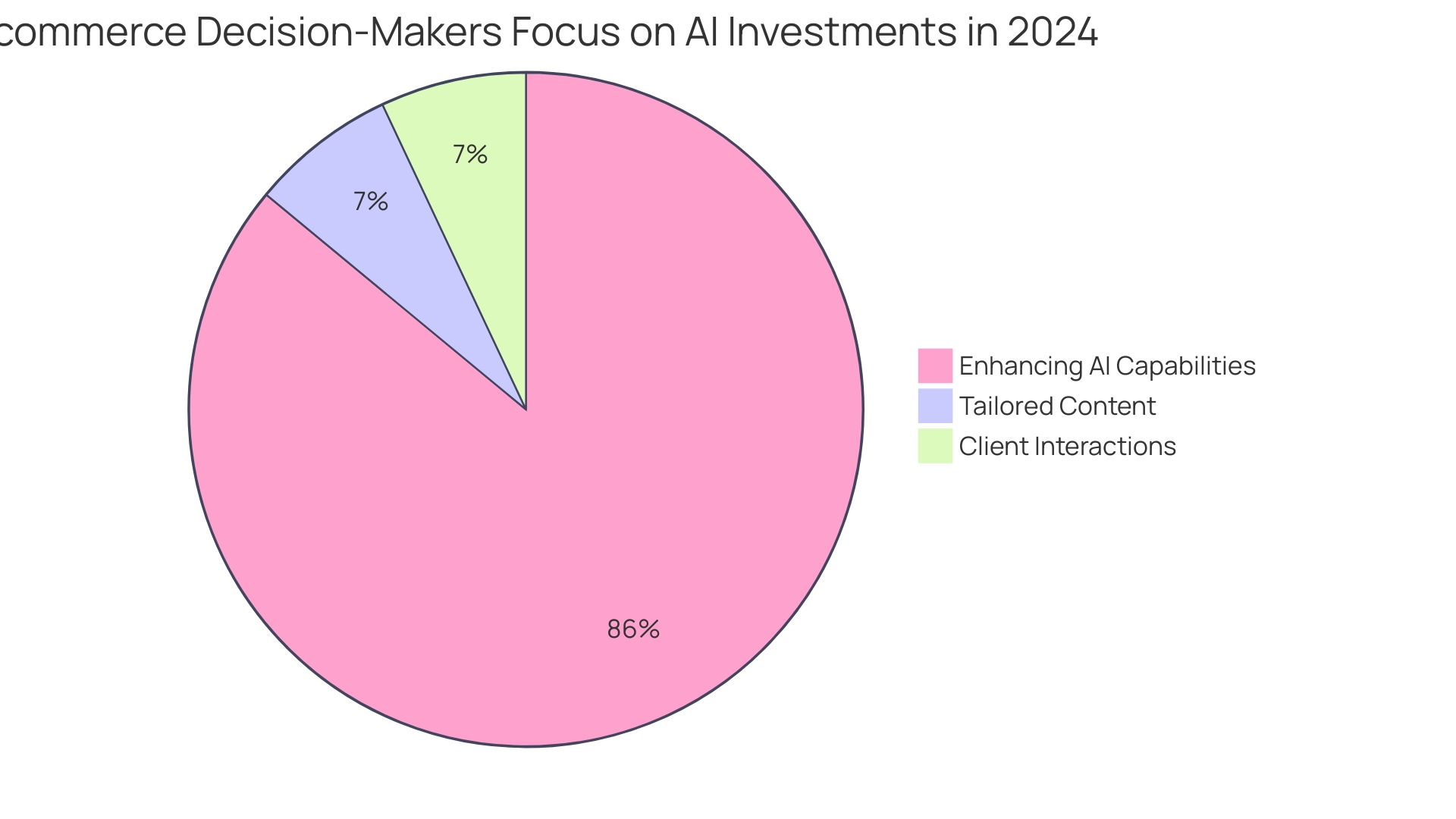
Best Practices for Ecommerce Website Optimization
To enhance your visibility in search engine results, prioritize SEO best practices that adapt to the evolving digital landscape. As competition intensifies, especially with the rise of AI-driven search tools, staying ahead requires a strategic approach to keyword research and content creation. Utilize comprehensive keyword databases that not only provide relevant keywords but also analyze keyword difficulty and competitor strategies. An intuitive, user-friendly interface for these tools can streamline your research efforts, allowing you to focus more on optimizing your site.
Ensure your website is mobile-friendly by employing responsive design techniques. With over 50% of global web traffic coming from mobile devices, a seamless mobile experience is crucial for retaining visitors and boosting conversion rates. Regularly updating your content is essential to maintain relevance; it not only engages users but also signals to search engines that your site is active and trustworthy.
Carrying out A/B evaluations can significantly enhance your marketing strategies. Clearly define problem statements before conducting tests to ensure alignment with desired outcomes. This focused approach minimizes wasted resources and enhances the effectiveness of your experiments, ultimately leading to improved conversion rates. According to recent studies, targeted A/B testing can increase conversion rates by up to 30%, making it a vital component of your digital marketing arsenal.
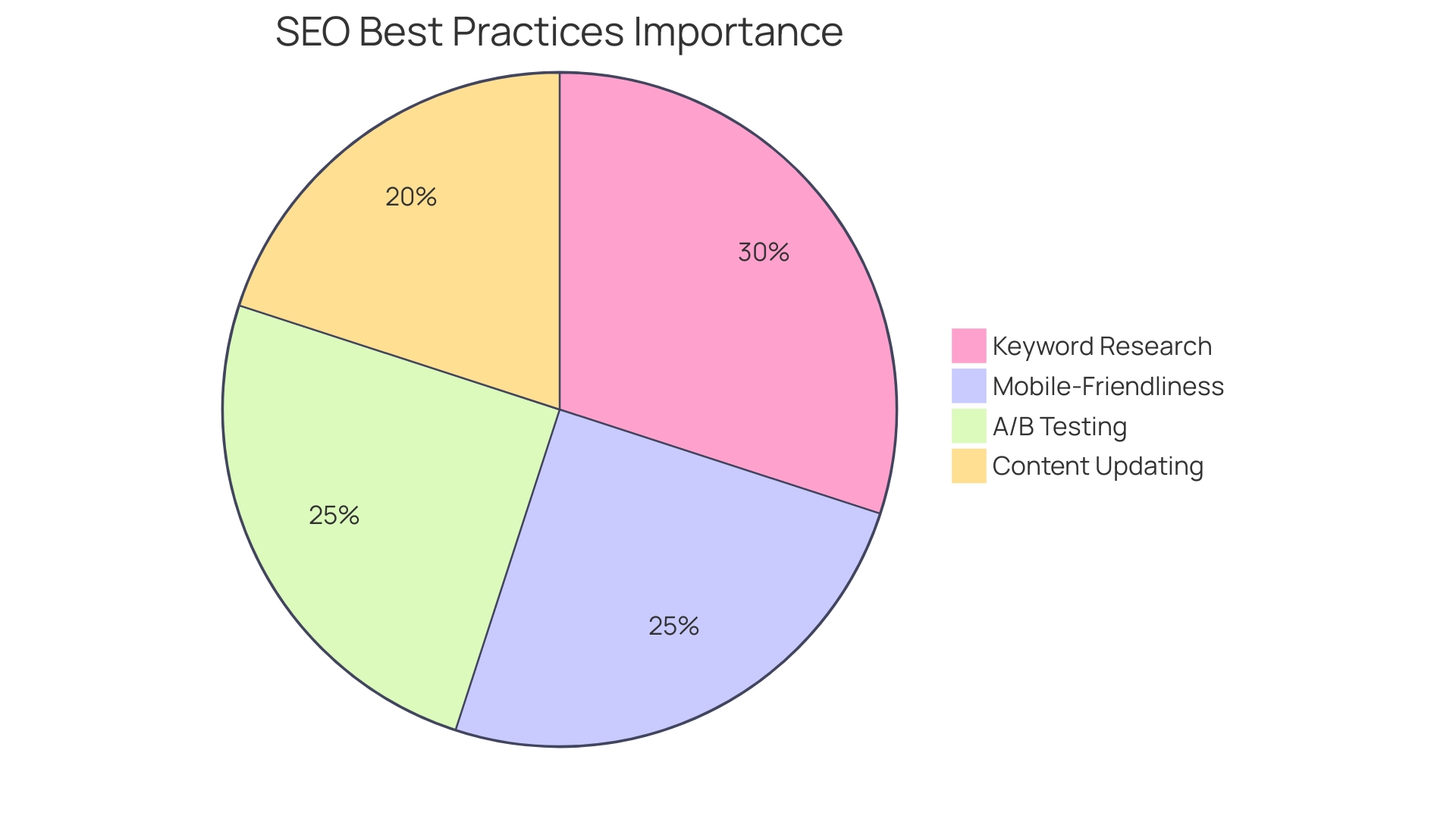
Conclusion
In the complex realm of application development, the importance of a comprehensive approach cannot be overstated. From conducting thorough market research to understanding user needs, each step is integral to creating applications that not only meet but exceed expectations. The emphasis on data-driven strategies, as illustrated by recent investments in market intelligence tools, highlights the necessity of staying informed about consumer behavior and industry trends.
User experience design stands out as a critical factor in retaining users, with intuitive navigation and quick load times directly influencing satisfaction and engagement. The statistics presented underscore the significant impact that user-friendly designs have on conversion rates and customer loyalty. Furthermore, incorporating user feedback into the development process ensures that applications remain relevant and aligned with user preferences.
Testing and quality assurance are paramount in today’s competitive landscape, where the cost of poor performance can result in lost customers. A robust testing framework that combines automated and manual methods is essential for identifying issues before launch, thereby enhancing user satisfaction and reducing churn. Additionally, focusing on scalability and performance optimization from the outset prepares applications for future growth, ensuring they can handle increased traffic without compromising functionality.
Finally, leveraging AI and personalization in e-commerce applications is becoming increasingly vital for driving customer engagement and conversions. The integration of advanced technologies not only enhances the shopping experience but also fosters brand loyalty through personalized interactions. As businesses navigate this rapidly evolving digital landscape, adopting best practices for optimization and embracing innovation will be crucial for sustaining competitive advantage and fostering long-term success.





